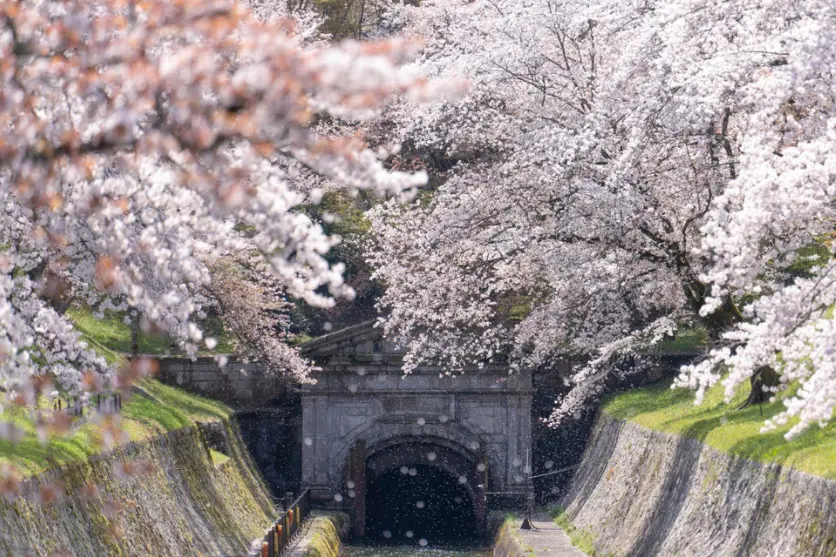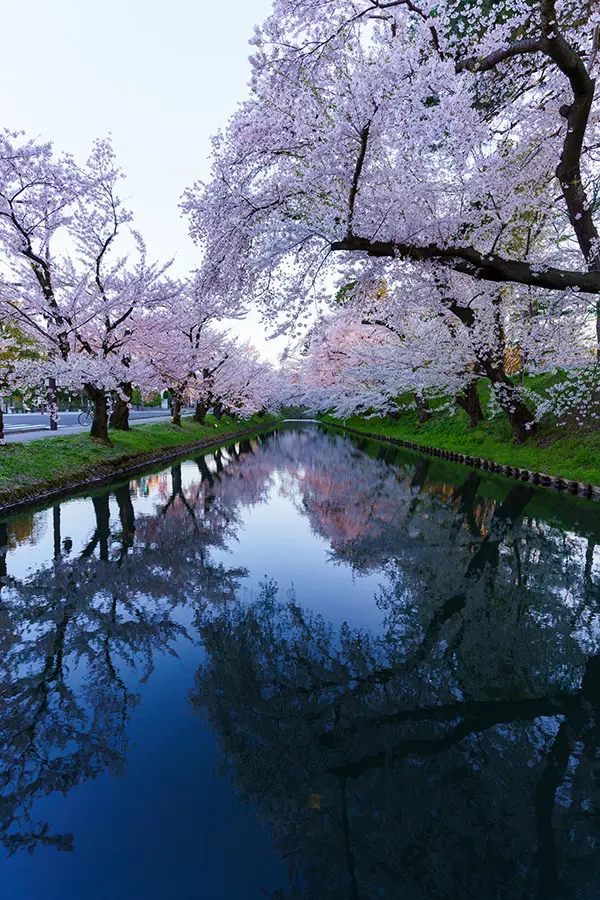October 18, 2024
How to Take Cherry Blossom Photos: Tips for Taking Beautiful Cherry Blossom Photos with an interchangeable-lens Camera
How to Take Cherry Blossom Photos: Tips for Taking Beautiful Cherry Blossom Photos with an interchangeable-lens Camera


Cherry blossoms are one of the most popular springtime subjects. Many people would like to take impressive pictures of cherry blossoms in full bloom. Cherry blossoms at their peak are stunningly beautiful, but capturing them the way you want requires a few tricks. In this article, we will explain in detail the techniques for taking beautiful pictures of cherry blossoms with a single-lens reflex camera. We will introduce specific tips on everything from camera settings to composition and how to choose the right lens for the scene.
Advantages of taking pictures of cherry blossoms with an interchangeable-lens camera
Recently, the camera performance of smartphones has greatly improved, making it easy to take beautiful pictures, but for those who want to take more serious pictures of cherry blossoms, we recommend using a single-lens reflex camera. By using an interchangeable-lens camera, you can take more artistic and beautiful pictures of cherry blossoms that cannot be expressed with a smartphone.
One of the major advantages of an interchangeable-lens camera is its ability to create beautiful bokeh. It is possible to obtain large, smooth bokeh while capturing every detail of the subject cherry blossoms. This allows you to create a “typical interchangeable-lens camera” photo that makes the cherry blossoms stand out in a more impressive way.
Another major advantage of interchangeable-lens cameras is that they allow you to finely adjust various settings such as shooting mode, shutter speed, and ISO sensitivity. By controlling exposure according to the scene, you can take pictures exactly the way you want. Furthermore, you can enjoy more authentic photography by using different wide-angle and telephoto lenses according to the image you.
Setting up the main unit of an interchangeable-lens camera
To take beautiful pictures of cherry blossoms with an interchangeable-lens camera, the camera's exposure settings are important. This section explains the basic settings for shooting mode, F value, shutter speed, and ISO sensitivity.
Shooting mode
Aperture priority mode” is recommended when shooting cherry blossoms with a single-lens reflex camera. In this mode, the shutter speed is automatically adjusted to obtain the correct exposure by setting the F-number (aperture value). Since the degree of blur in a photo depends on the F-number, this mode is easy to use for subjects such as cherry blossoms for which you want to take advantage of the blur effect.
If you want to capture a subject in motion, such as cherry blossoms dancing in the air, you can use “Shutter Priority Mode. When you become accustomed to taking pictures, try using “manual mode” to create your own expressions.
F-number (aperture value)
The smaller the F-number, the wider the aperture and the more light enters the camera, while the larger the F-number, the narrower the aperture and the less light. On the other hand, the larger the F-number, the smaller the aperture and the less light enters the camera. F-number is also related to the amount of bokeh in a picture: a smaller F-number produces a larger bokeh, while a larger F-number produces a smaller bokeh.
For this reason, it is common to use a F-number of F8 or higher when taking photographs to precisely depict entire landscapes. On the other hand, for close-ups and portraits, where you want to blur the background and make the subject stand out, it is best to set the F-stop close to maximum aperture, around F2 to F4.
Shutter Speed
Shutter speed is a numerical value that represents the amount of time the camera shutter is open, and is related to exposure and subject blur.
The faster the shutter speed, the easier it is to capture a moving subject, but the less light is available. On the other hand, a slower shutter speed produces more light, but subject blur is more noticeable.
When taking pictures of cherry blossoms when they are mostly still, there are not many situations where a fast shutter speed is required. It is recommended to start with a shutter speed of about 1/100 to 1/250 second and adjust accordingly.
ISO sensitivity
ISO sensitivity is a numerical value that expresses the amount of light captured by a digital camera's sensor when light passes through the lens, and the higher the number, the brighter the picture. In dark environments, setting a high ISO sensitivity will increase exposure, but setting the ISO sensitivity too high can result in noticeable noise, which can deteriorate image quality. Therefore, it is also important not to set ISO sensitivity unnecessarily high.
On sunny days, a low ISO sensitivity (around ISO 100 to 200) will provide sufficient brightness. On cloudy days with little sunlight, set a slightly higher ISO sensitivity (around ISO 800 to 1600) or adjust the brightness by adding exposure compensation.
Basics of taking beautiful pictures of cherry blossoms
Here are some specific tips for taking pictures. In order to take beautiful pictures of cherry blossoms, it is important to keep a few basic points in mind. By being aware of choosing an appropriate lens, adjusting exposure, and composition, you will be able to take more impressive photos of cherry blossoms.
1) Confirm the blooming forecast and plan your shooting plan
Even if you have taken the trouble to acquire an interchangeable-lens camera and lenses, it will be worthless if you miss the timing of the blooming of the cherry trees. Therefore, be sure to check the bloom forecast and weather conditions.
You can check the blooming forecast at the Japan Meteorological Agency and weather forecast websites. Also, since crowds are expected at popular photo spots, it is a good idea to plan ahead of time when you will be taking photos. In addition, the weather during the best time to view cherry blossoms can be changeable, and there are days when the flowers are cold, so be sure to pay attention to the weather forecast as well.
2) Selecting the right lens
In order to take the desired photo, it is important to know the characteristics of the lens and then switch to the appropriate lens.
First of all, many of you may recall the typical example of a photograph of cherry blossoms with layers and layers of blossoms folded on top of each other. This kind of powerful image that seems to rush toward the viewer is an expression that only a telephoto lens can produce. Telephoto lenses have a “compression effect” that makes distant objects appear closer to the viewer, making it possible to create the impression that cherry blossoms are tightly packed within a limited angle of view.
Telephoto lenses are also suitable for close-ups of cherry blossoms and for taking pictures that take advantage of the blur effect. By using a telephoto lens, a distant subject can be enlarged to fill the entire image. It is also good at capturing the delicate textures and colors of petals.
On the other hand, a wide-angle lens is effective when you want to capture a wide view of a row of cherry trees or an entire landscape. Wide-angle lenses offer a wide angle of view, allowing you to capture a spectacular cherry blossom scene in a single photo. The wider field of view also makes it easier to express the relationship between the cherry blossoms and their surroundings. Also, the perspective (sense of perspective) is emphasized, so by composing the picture in a creative way, you can create a dynamic effect that is different from that of a telephoto lens.
Although telephoto lenses are very useful for taking pictures of cherry blossoms, one point to keep in mind is that camera shake can easily occur. Therefore, you can minimize camera shake even when shooting hand-held by using a tripod or choosing a lens that is as lightweight as possible and has an image stabilizer.
3) Adjust exposure according to weather and time of day
Exposure is the key to taking beautiful pictures of cherry blossoms. If the exposure is insufficient, the photo will be dark and will not fully express the beauty of the cherry blossoms. Be especially careful when taking pictures on cloudy days with little sunlight, at dawn, or after dusk.
One way to adjust exposure is to control the F-number r: a smaller F-number allows more light to reach the camera's sensor, making the photo brighter. On the other hand, changing the F-number will change the bokeh effect, so to adjust brightness without changing the bokeh effect, set the ISO sensitivity higher; higher ISO sensitivity allows you to take brighter pictures with less light.
You can also use the camera's in-camera exposure compensation function to adjust brightness. Setting the exposure compensation to the positive side will make the photo brighter.
You can determine if the exposure is appropriate by checking the pictures you have taken. If you feel that the photo is too dark after taking a few shots, adjust the exposure using the method described above.
4) Composition
In order to take impressive and beautiful pictures of cherry blossoms, it is essential to devise a good composition. Composition is determined by the placement of the subject and the combination of elements in the picture.
When capturing the entire landscape, it is effective to use a three-section composition or a diagonal composition.
Triptych composition divides the image into three equal parts, horizontally and vertically, and places the main subjects at the intersections or on the lines. For example, a cherry tree can be placed in one-third to two-thirds of the image, and the sky or a building in the remaining area to create a well-balanced composition.
Diagonal composition is a method in which a diagonal line is assumed in the picture and the subject is placed on that line. This is useful when shooting a landscape with depth, such as a row of cherry trees or cherry blossoms along a river.
On the other hand, hinomaru composition is typical for close-up shots of cherry blossom petals. Hinomaru composition is a composition method in which the subject is placed in the center of the picture. By placing the cherry petals in the center, the beauty of the subject can be emphasized.
Another important aspect of cherry blossom photography is the choice of background. If the background is cluttered or out of harmony with the subject, the beauty of the cherry blossoms will be lost. Keep the background as simple as possible and let the cherry blossoms take center stage.
5) Careful of the direction of the light
When taking pictures of cherry blossoms, you need to pay attention to the direction of the light. In particular, if you shoot with backlighting, the petals of the cherry blossoms will be in shadow, and the delicate expression of the blossoms will be lost. Backlighting has its advantages, but you are less likely to make a mistake if you first try taking pictures with forward light in mind.
The appearance of light also changes depending on the time of day. The soft light of the morning sun or the evening sun brings out the gentle atmosphere of the cherry blossoms. The warmth of the light is especially noticeable during the evening, which is known as the golden hour. Aiming for this time of day will give your photos a different and fantastic atmosphere.
6) Creating crispness by leaning in and pulling out
Simply photographing landscapes can result in photos that are flat and unimpressive. By effectively using leaning in and pulling out, you can create a photo that is full of life.
For example, when shooting close-ups, you can emphasize the light gradation and surface texture of the petals by going all out and getting a close-up of the petals. Using a telephoto lens and blurring the background can enhance the beauty of the image.
For close-up shots, you can use a wide-angle lens to capture the cherry blossoms as part of the landscape. Try shooting the entire cherry tree, a row of cherry trees, or cherry blossoms along a river with a wide field of view. To emphasize perspective, place a large subject in the foreground or compose the photo with depth to make it more impressive.
How to take photos that enhance the impression of cherry blossoms
To bring out the full beauty of cherry blossoms, it is important to be aware of various scenes and compositions. Here are some examples of some typical scenes and how to take pictures of cherry blossoms.
Capturing a scene or an entire scene with cherry blossoms folded all over
A telephoto lens is recommended for taking pictures of many cherry trees folded on top of each other. In particular, a telephoto lens allows you to take advantage of the compression effect in landscapes where the cherry blossoms are arranged in a straight line. When you use a telephoto lens to photograph a straight line of cherry blossoms, such as a row of cherry trees or a tunnel of cherry blossoms, you can create an overwhelming impression of cherry blossoms laid out from the front to the back. Furthermore, adding an oblique angle to the composition will create depth and a dynamic impression.
On the other hand, a wide-angle lens is recommended if you want to capture an expansive view of the entire landscape. By capturing the entire row of cherry trees, riverbank, or park, you can express the beauty of cherry blossoms in contrast with the surrounding environment.
When composing your shot, it is a good idea to keep in mind the three-section composition and diagonal composition. A simple background, such as a blue sky, will create a well-balanced photo.
Close-up of cherry blossom petals
To capture the delicate beauty of cherry blossoms, close-up shots of the petals are also recommended. By getting close to the subject with a standard lens or using a telephoto lens, you can take pictures in which the details stand out while blurring the background.
Composition is also an important aspect of close-up photography. By keeping in mind the sunken circle composition and diagonal composition, you can make effective use of background blur and foreground blur.
On the other hand, be careful not to blur the subject. If the subject itself, such as a flower, branch, or petal, is swaying in the wind, it will be difficult to focus on the subject. If this happens, use a faster shutter speed.
Making the cherry blossoms look impressive in the background
The choice of background also makes a big difference in the impression of the cherry blossoms. The key point to be aware of is the contrast between the background and the cherry blossoms.
First of all, the pale pink color of the cherry blossoms will look more vivid against a blue sky. A clear blue sky is one of the best backgrounds to enhance the beauty of cherry blossoms.
You can also create a more gorgeous and atmospheric landscape photo by using mountains, flowers and plants, or buildings as a background. For example, the contrast between cherry blossoms and rape blossoms creates a colorful spring scene. By incorporating shrines and temples in the background, you can take pictures that are full of Japanese sentiment.
It is also important to compose your photo in a way that balances the background with the cherry blossoms. When capturing a large landscape, it is a good idea to imagine a four-section composition in addition to a three-section composition. In a quadrant composition, the picture is divided into four equal parts and the cherry blossoms are placed at the intersections of the four parts. By being aware of this composition, it will be easier to balance the entire picture.
Hana-ikada (flower rafts) and upside-down cherry blossoms
Cherry blossoms reflected on the surface of water are one of the most beautiful and picturesque subjects. For example, a flower raft filled with cherry petals or the reflection of cherry blossoms on the water (inverted cherry blossoms) has a unique beauty.
When taking pictures of flower rafts and inverted cherry blossoms, try using a telephoto lens. Using a telephoto lens, capture the cherry blossoms on the water surface and the cherry blossoms on the ground at the same angle of view. The compression effect will make the cherry blossoms appear as one, from the front to the back, resulting in a more beautiful and impressive photo.
It is also a good idea to choose a calm, windless day to take pictures. Wind can cause the surface of the water to ripple, which may cause blurring of the subject.
Cherry blossoms at night
Cherry blossoms at night are a subject with a fantastic atmosphere that differs from that of daytime. Cherry blossoms lit up at night have a mysterious image that leaves a stronger impression on the viewer. However, nighttime photography is somewhat more difficult because of the dark conditions.
When shooting nighttime cherry blossoms, set the F-number to a smaller value. This will allow more light to enter the scene. At the same time, set a slower shutter speed. As an example, a slow shutter speed of 1/60 to 1 second will ensure sufficient exposure time. It is also recommended to set a higher ISO sensitivity. For example, setting the ISO sensitivity to about ISO 800 to 1600 will allow you to take pictures in dark places.
When photographing illuminated nighttime cherry blossoms, it is also important to take advantage of the light source. Cherry blossoms around the light source can easily receive enough light to capture fine details. On the other hand, adjust the shutter speed and ISO sensitivity to avoid overexposure and white-out.
Shooting under cloudy skies or in the morning or evening
When photographing cherry blossoms on cloudy days, in the morning, or in the evening when there is little sunlight, it is important to adjust the exposure. As with nighttime cherry blossom photography, it is best to imagine using a smaller F-number, a slower shutter speed, and a higher ISO sensitivity.
In addition, the color of the cherry blossoms tends to look lighter against a cloudy sky. To avoid weakening the impression of the cherry blossoms, pay attention to the composition of the background. You can enhance the presence of the cherry blossoms by filling the entire angle of view and by including elements other than the sky in the background.
When shooting in the morning or evening, you can create a fantastic atmosphere by taking advantage of the impression of soft light. It is also recommended to try shooting during the golden hour in the evening.
Cherry blossoms at the beginning of falling
Cherry blossoms that have begun to fall are also an attractive subject that combines fragility and beauty. By skillfully capturing the petals dancing in the wind or scattered on the ground, you will be able to take impressive photographs.
When photographing petals dancing in the wind, contrast them with the blue sky and other plants and trees. Petals dancing in the air against a blue sky is a perfect way to express the fragility of cherry blossoms. The contrast between the fresh green grass and the scattered cherry blossoms also makes for an atmospheric work that evokes the transition of spring.
To capture the falling petals, use a fast shutter speed. Also, use continuous shooting to capture the momentary movement of the petals.
Capturing the details of the branches and leaves of scattered cherry blossoms is also an interesting expression. After the petals have fallen, the branches and leaves have delicate and beautiful shapes. Using a macro lens to take close-up shots will give you a different impression.
How to take photos with cherry blossoms to add a springtime touch
Cherry blossoms are a representative flower of spring and add a spring-like atmosphere to a variety of scenes. Here we will show you how to take portraits, entrance and entrance ceremonies, and other types of photographs that incorporate cherry blossoms into portraits.
Portraits
Portrait photography with a background of cherry blossoms in full bloom enhances the beauty of the subject. While keeping the person in focus, you can create a spring-like atmosphere by blurring the cherry blossoms in the background to an appropriate degree.
To create a beautiful background blur, try using a telephoto lens. By including cherry blossoms in the foreground bokeh, you can create a soft overall impression and a three-dimensional effect.
Entrance ceremonies
Entrance ceremonies are special days for children to make a new start. Incorporating cherry blossoms into photos taken on such a special day can add a spring-like and festive atmosphere.
If your child is short, we recommend holding the camera at the child's eye level. By shooting from a low position, you can capture a larger image of the child throughout the photo. It is also a good idea to try to find an angle that captures both the cherry petals and the child's smile at the same time.
Beginning of a new start
Spring is also the season for starting a new life. Why not capture the memories of spring in a new environment with cherry blossoms?
If you have moved to a new place, for example, photographing the cityscape and cherry blossoms together will leave a memorable impression of your new life. Adding cherry blossoms as accents to the background of your new house, the surrounding town, or a school can create a spring-like atmosphere.
For this type of shooting, use a wide-angle or standard lens and look for a composition that takes advantage of perspective. By placing the cherry blossoms in the foreground while expressing the depth of the cityscape, you can capture a landscape that leaves a lasting impression of the cherry blossoms.
How to choose the right lens for cherry blossom photography
Lens selection is also an important factor in bringing out the full beauty of cherry blossoms. Choose the best lens for your shooting scene and purpose. Here are some tips for choosing the right lens for cherry blossom photography.
Focal length and zoom ratio
Focal length is an important factor that determines the angle of view of a lens. Telephoto lenses are often used for cherry blossom photography. A telephoto lens can handle a wide range of variations, from landscape shots that take advantage of compression effects to close-up shots of cherry blossom petals. A focal length of about 200mm or more at the telephoto end often makes close-up photography possible even in situations where you cannot get close to the cherry blossoms.
On the other hand, a wide-angle lens is suitable for capturing the entire landscape. A wide-angle lens with a short focal length can dynamically capture the entire landscape in front of you.
In addition, a high-power zoom lens with a large zoom ratio is a versatile lens that can cover a wide range from wide-angle to telephoto with a single lens without having to change lenses. Since there are many crowds when photographing cherry blossoms and you want to move as lightly as possible, an all-in-one zoom lens is useful when convenience is important.
Maximum aperture F value
The maximum aperture F value is an indicator of the brightness of a lens. The smaller the maximum aperture F value of a lens, the lighter it can take in, making it easier to take brighter pictures even in dark places.
When photographing cherry blossoms, it is often necessary to take pictures in low-light conditions, such as on cloudy days or at night. In such cases, choosing a lens with a small maximum aperture f-number makes it easier to take brighter pictures. A bright lens with a maximum aperture of around f/2.8 is flexible enough to handle dark environments.
Size and weight
Since the cherry blossom season is crowded with many people, large and heavy lenses can be inconvenient to carry and handle. Therefore, the compactness of the lens is also an important factor.
In selecting a lens, we recommend that you use a lens that is as compact and lightweight as possible. Even when it is difficult to use a tripod, a lightweight lens reduces the burden on the arms supporting the lens, thereby minimizing camera shake.
MOD (Minimum Object Distance)
The minimum focus distance is the shortest distance at which the lens can focus on a subject. A lens with a short minimum focus distance allows you to get very close to the subject. A lens with a short minimum focus distance is useful when you want to take close-up shots of cherry petals or branches. It is also possible to clearly capture the delicate expression of cherry blossoms against a large blur background.
AF (auto focus) and image stabilizer
When photographing cherry blossoms, it is necessary to quickly focus on the subject in a crowded environment. Therefore, it is important to select a lens with high AF (auto focus) performance; a lens with fast and accurate AF will allow you to capture the best possible shutter release opportunities.
Lenses with an image stabilization mechanism are also recommended. Since camera shake is especially likely to occur when shooting with telephoto lenses, an image stabilization mechanism will make it easier to take blur-free photos at relatively slow shutter speeds, even when shooting hand-held.
TAMRON lenses recommended for cherry blossom photography
TAMRON lenses offer excellent descriptive performance, yet are lightweight, compact, and easy to handle for beginners. Here we introduce TAMRON lenses, from wide-angle lenses to telephoto lenses, that are ideal for cherry blossom photography.
Wide Angle Zoom lens
-
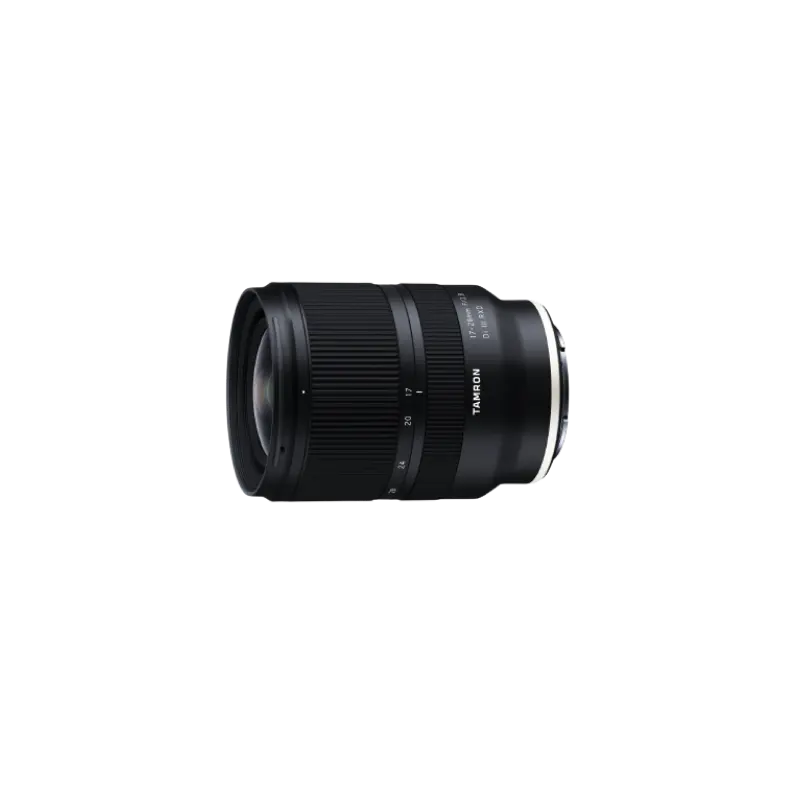
-
17-28mm F/2.8 Di III RXD a046(Model )
The 17-28mm F/2.8 Di III RXD (Model A046) achieves a filter diameter of ø67mm, which is surprising for a large aperture ultra wide-angle zoom lens for full-frame cameras. It’s small and light weight with a good camera balance. It's a dedicated lens for mirrorless interchangeable -lens cameras that can be carried easily and can be used in various situations.
-

-
17-50mm F/4 Di III VXD a068(Model )
The 17-50mm F/4 Di III VXD (Model A068)It's the world’s first lens covering from ultra wide-angle 17mm to the standard 50mm focal length. The highly-compact TAMRON 17-50mm F/4 Di III VXD (model a068) for Sony E-mount full-frame mirrorless cameras offers maximum versatility for still and video creators. From landscapes to living rooms, this lens captures all that you see.
-
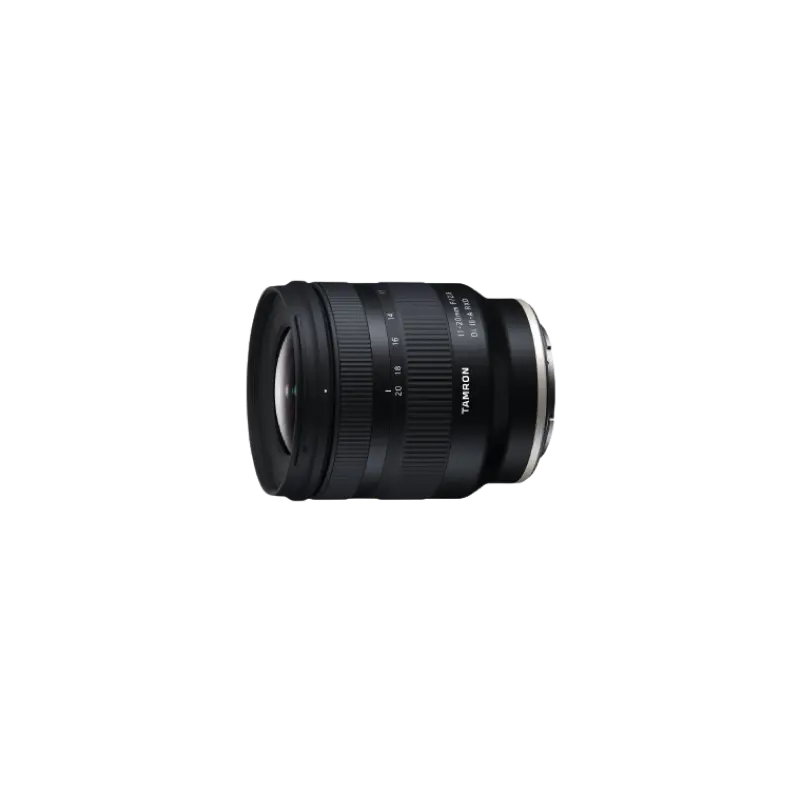
-
11-20mm F/2.8 Di III-A RXD b060(Model )
The 11-20mm F/2.8 Di III-A RXD (Model B060) is the world's first compact, lightweight F2.8 ultra wide-angle zoom lens for Sony E-mount APS-C mirrorless cameras. Can be a great choice for video shooting.
-

-
20-40mm F/2.8 Di III VXD a062(Model )
The 20-40mm F/2.8 Di III VXD (Model A062) is a new large-aperture standard zoom lens that thoroughly pursues portability. While covering the range from the ultra-wide angle of 20mm to the standard range of 40mm, it is the smallest and lightest in its class. It also offers high image quality throughout the entire zoom range, making it useful not only for still image shooting but also for video recording such as vlogging. The VXD, which is quiet and agile, achieves high-speed, high-precision autofocusing. It is a new, unprecedented large-aperture standard zoom lens that allows users to easily enjoy taking out and shooting both still and video.
-
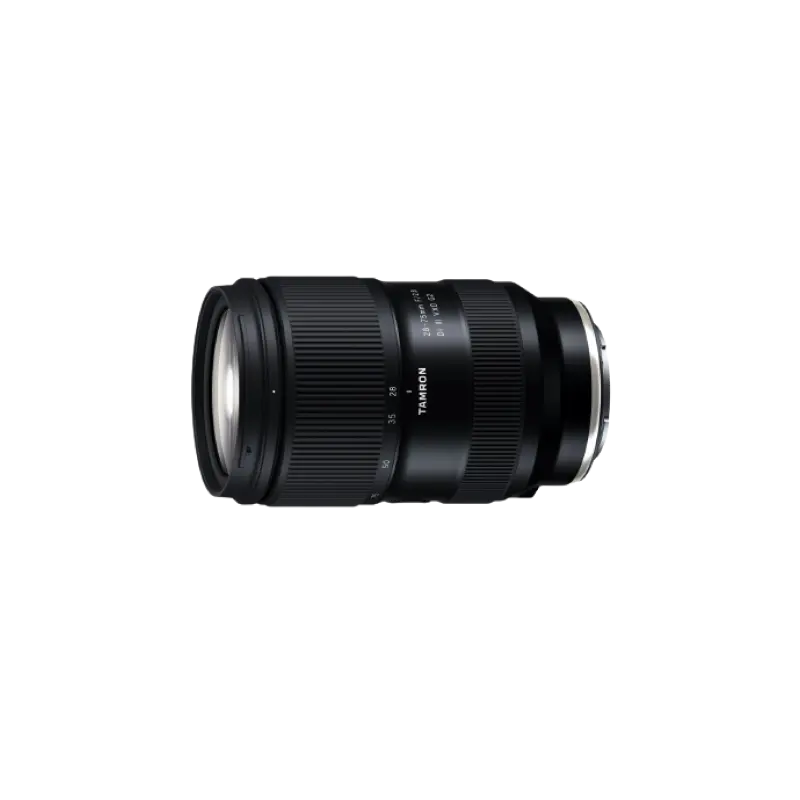
-
28-75mm F/2.8 Di III VXD G2 a063(Model )
28-75mm F/2.8 Di III VXD G2 (Model A063) is the second-generation fast-aperture standard zoom lens for Sony and Nikon full-frame mirrorless cameras, offering significantly improved optical and autofocus performance and new function customization.
-
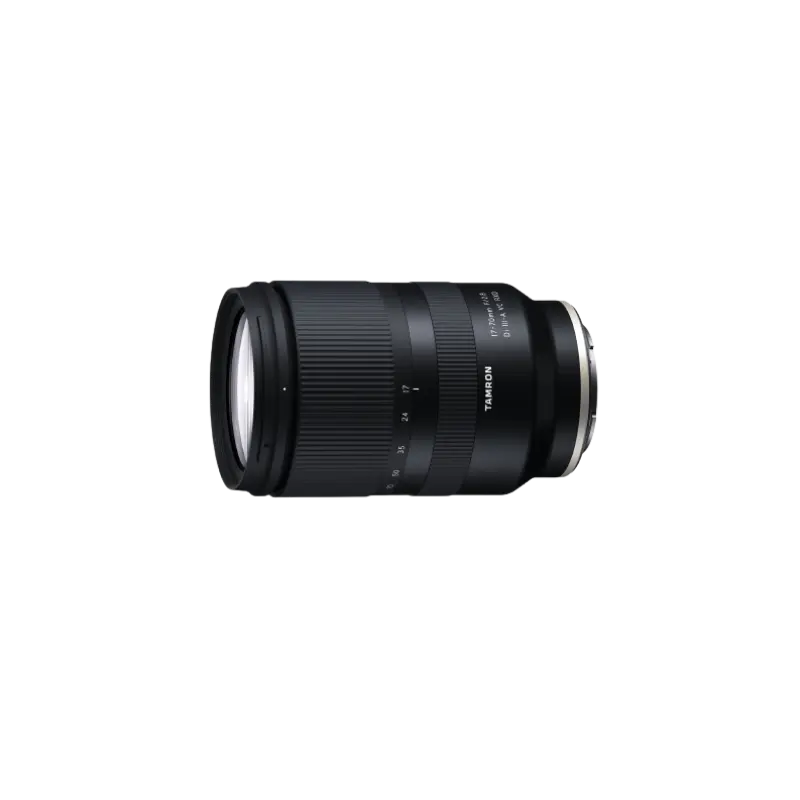
-
17-70mm F/2.8 Di III-A VC RXD b070(Model )
The 17-70mm F/2.8 Di III-A VC RXD (Model B070) is a large-aperture standard zoom lens for APS-C format mirrorless cameras. With a focal length range of 17mm to 70mm (a full-frame equivalent of 25.5-105mm) for daily use, this achieves a 4.1x zoom. The optical design ensures high resolution and high contrast not just in the center of the image but also in corners and at the edges. The quiet AF drive motor and the VC image stabilization mechanism facilitate hand-held shooting. In addition, by counteracting focus breathing, the 17-70mm F2.8 empowers users' expression of their creative intentions to the fullest degree. This highly practical lens allows you to easily enjoy the high image quality of a large F2.8 aperture for both still and video shooting.
-
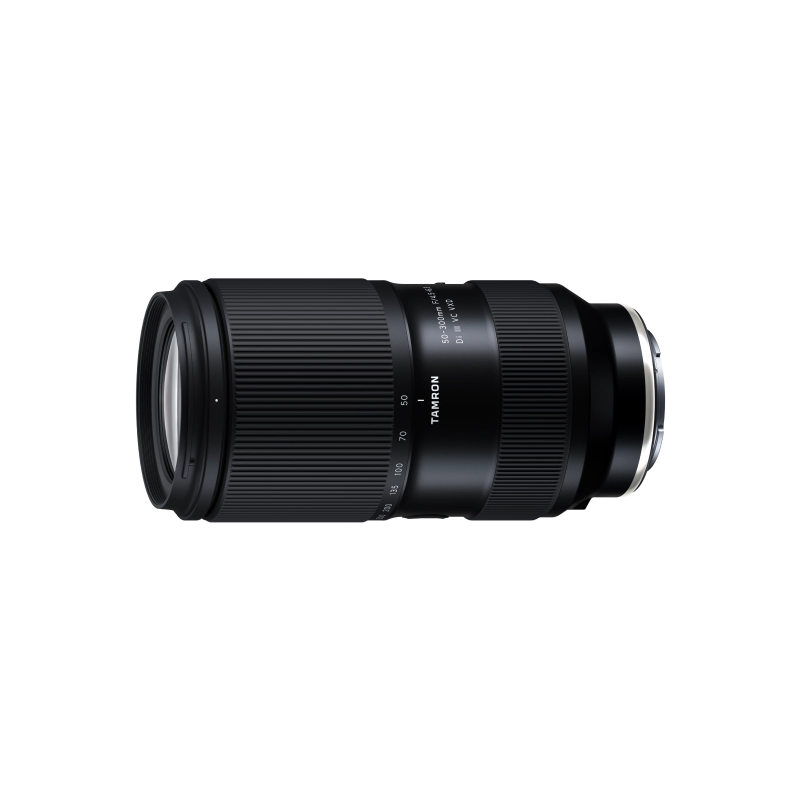
-
50-300mm F/4.5-6.3 Di III VC VXD a069(Model )
50-300mm F/4.5-6.3 Di III VC VXD (Model A069) is a 6x telephoto zoom lens for Sony E-mount that delivers outstanding convenience and image quality. Discover the groundbreaking capabilities of a 300mm telephoto zoom that starts from 50mm at the wide end.
-

-
35-150mm F/2-2.8 Di III VXD a058(Model )
The 35-150mm F/2-2.8 Di III VXD (Model A058) is a high resolution travel zoom lens that covers everything from the 35mm wide angle to the 150mm telephoto focal length, the first zoom lens achieving an aperture of F2 at the wide angle end. It has a groundbreaking fast-aperture and utilizes the linear motor focus mechanism VXD (Voice-coil eXtreme-torque Drive), thereby achieving high speed, high precision autofocusing. The innovative lens design enabled us to greatly improve the lens's grip and functionality. The software, developed in-house, enables to easily customize functions and to update firmware.
-
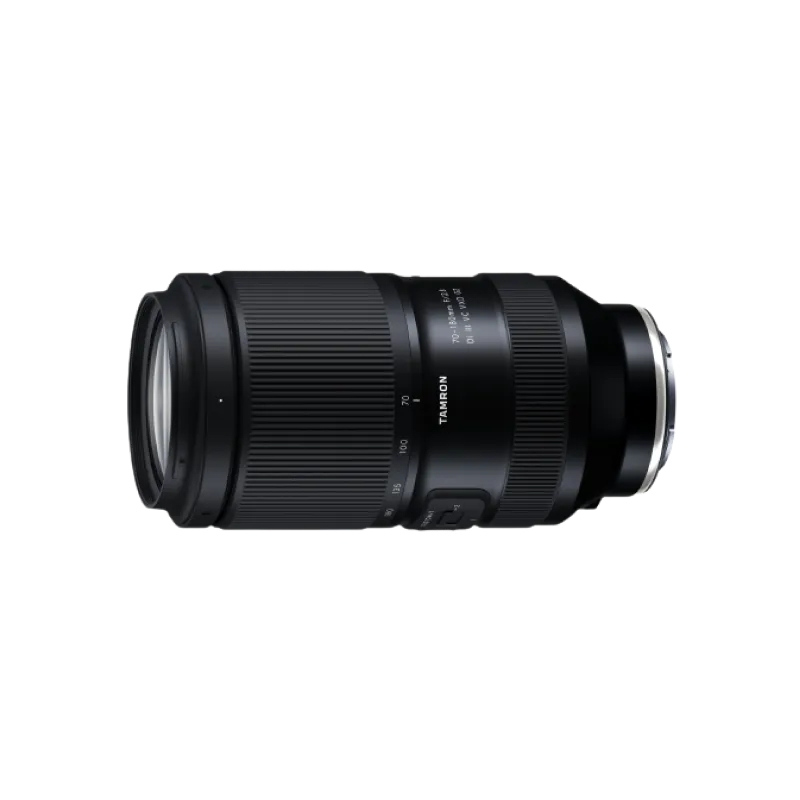
-
70-180mm F/2.8 Di III VC VXD G2 a065(Model )
70-180mm F/2.8 Di III VC VXD G2 (Model A065) has evolved to G2 level.This is the world’s smallest and lightest, fast-aperture telephoto zoom lens for Sony E-mount with astounding portability and superb image quality.
-

-
70-300mm F/4.5-6.3 Di III RXD a047(Model )
The 70-300mm F/4.5-6.3 Di III RXD (Model A047) for full-frame mirrorless cameras is a telephoto zoom lens designed and created so photographers of all skill levels can enjoy high quality images comfortably. The 70-300mm F4.5-6.3 covers a broad telephoto zoom range yet is the small and lightest weight. With special emphasis on resolving power, TAMRON has deployed special lens elements appropriately arranged to correct chromatic aberration, generally very strong in a telephoto lens, as well as other aberrations. Users can enjoy high-resolution images combined with stunning bokeh qualities that are achievable only with a telephoto lens. The lens also incorporates the RXD, a high-speed precision AF drive system that is remarkably quiet. The 70-300mm F4.5-6.3 is a versatile lens for photographing landscapes, sports and other action, pets, wildlife, and more. The lens also demonstrates its potential for portrait shooting, casual snapshots, and scenarios that require you to be mobile and shoot handheld, like sporting events.
-

-
28-300mm F/4-7.1 Di III VC VXD a074(Model )
28-300mm F/4-7.1 Di III VC VXD (Model A074) is a compact and versatile all-in-one 10.7x zoom lens for Sony E-mount. The lens boasts class-leading high image quality, and is equipped with high-speed AF VXD and VC. Go from wide-angle to long telephoto in an instant and capture every moment of the world around you.
-

-
28-200mm F/2.8-5.6 Di III RXD a071(Model )
Tamron has distilled all the technical capabilities and know-how amassed over the last 28 years in its development of all-in-one zoom lenses into the creation of this 28-200mm F/2.8-5.6 Di III RXD (Model A071), designed exclusively. The lens has a large maximum aperture of F2.8 at 28mm wide end, which represents a world’s first* for all-in-one zoom lenses, and delivers high-level performance across the entire zoom range, from the 28mm wide-angle end to 200mm telephoto.
-
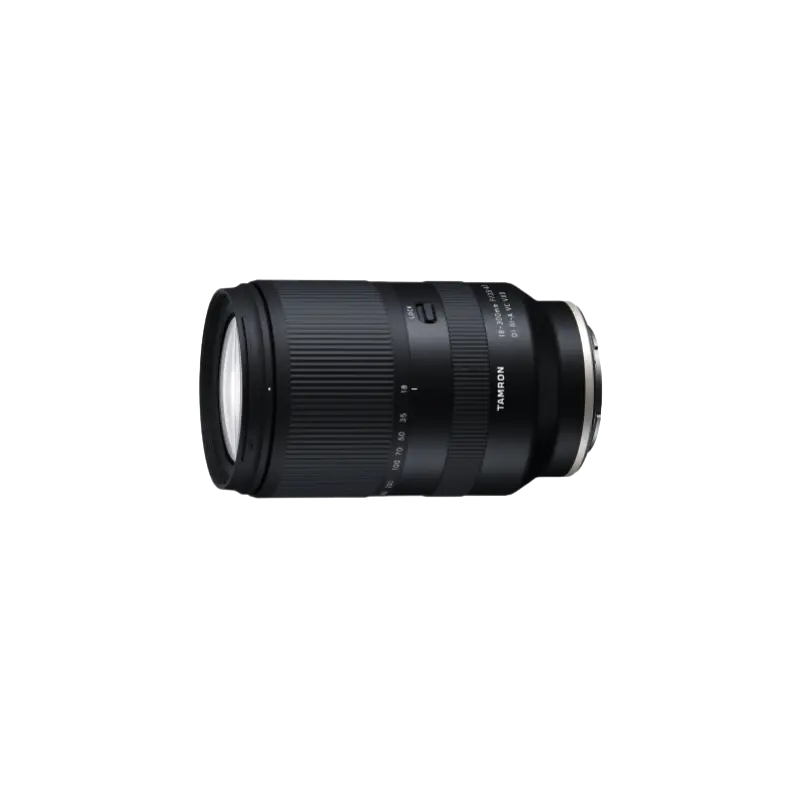
-
18-300mm F/3.5-6.3 Di III-A VC VXD b061(Model )
The 18-300mm F/3.5-6.3 Di III-A VC VXD (Model B061) achieves 16.6x zoom and is equipped with the VXD for a quiet and agile AF drive. The optical construction includes several special lens elements, specifically four LD (Low Dispersion) and three hybrid aspherical lens elements. These elements help to produce clear, sharp images from the center to the corners and deliver top-level image quality in its class. It is enabled close-up shooting and is equipped with the VC system. The 18-300mm F/3.5-6.3 makes photography more fun because you can use it in an unlimited number of situations. It’s so versatile, it will inspire you to push your creativity further and further.
Take advantage of the features and techniques of the lenses to capture beautiful cherry blossom photos!
Capturing the beauty of cherry blossoms in photographs requires consideration of many factors, including camera settings, composition, and lens selection. By utilizing the tips introduced in this article, you will be able to take more impressive and attractive pictures of cherry blossoms. We hope you will capture the beauty of cherry blossoms from your own perspective and leave us with a wonderful photo.



